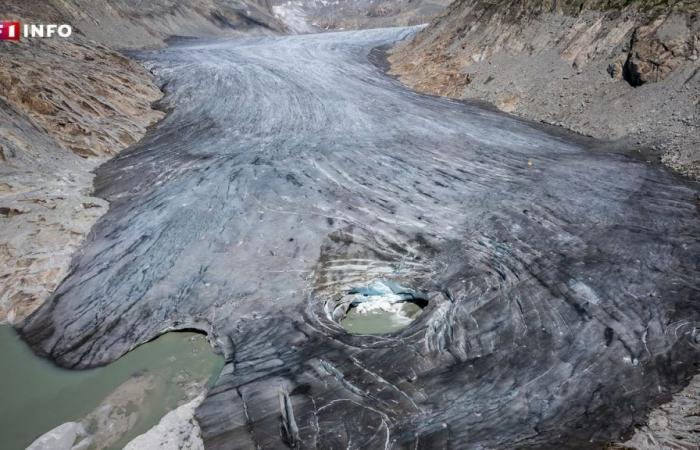
Switzerland and Italy recently had to redraw their border at the foot of the Matterhorn.
In question: the modification of the water separation line after the melting of a glacier.
Changes to the route are also planned at the border between France and Switzerland.
It is the result of several years of negotiations between the two countries. Switzerland officially approved on September 27 a modification of its border with Italy due to the melting of glaciers in the canton of Valais in Switzerland and the Aosta Valley region, in the northwest of Italy, according to the BBC channel, confirming information from Léman Bleu.
According to the Italian daily The Republic it was only in May 2023 that a joint Italian-Swiss commission reached an agreement on the delimitation of this border zone which has therefore just been ratified. The two states “will exchange equivalent surfaces”, specifies the Swiss press agency Keystone – ATS, cited by Le Nouvelliste.
Adjustments between France and Switzerland
This massive loss of ice is not limited to the Matterhorn region and is part of a more general trend of rapid melting of glaciers in Europe.
Note that changes to the route are also planned at the border between France and Switzerland. These are necessary in particular because of work planned on the cross-border tram line between the municipalities of Perly-Certoux and Saint-Julien-en-Genevois. As a reminder, the common border between France and Geneva extends over 103 kilometers, 50 of which are in the middle of rivers.
-
Read also
Antarctica: melting glaciers at the point of no return
As a benchmark, despite a very snowy winter, Swiss glaciers lost 2.4% of their volume this year in the summer heat according to the annual Glamos study published this Tuesday. Melting accelerated by dust from the Sahara, commented the director of the Swiss glaciological survey network (Glamos), Matthias Huss, for Swiss glaciers.
In this context, several glaciers are now partly covered with geotextile tarpaulins for part of the year to protect them from the heat. But this only reduces melting by around 50%, according to Matthias Huss: “It’s not done to save a glacier” but to maintain economic activity at a specific location, such as a ski slope.





